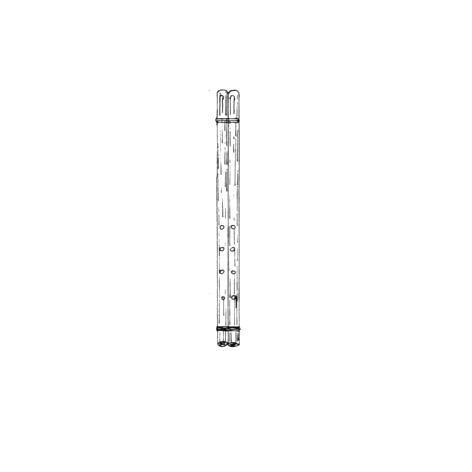Kanda overview
 Junda (pinyin: bì dá) is a single-reed gas-sounding instrument of the Li nationality, rich in local characteristics. The Han nationality calls it the double-pipe or Li nationality panpipes. It is popular in the Li nationality branch of Dongfang City, Hainan Province, in the areas where Li and Meifu Li live, and in the ethnic bands of professional art groups in Hainan Province.
Junda (pinyin: bì dá) is a single-reed gas-sounding instrument of the Li nationality, rich in local characteristics. The Han nationality calls it the double-pipe or Li nationality panpipes. It is popular in the Li nationality branch of Dongfang City, Hainan Province, in the areas where Li and Meifu Li live, and in the ethnic bands of professional art groups in Hainan Province.It is composed of two Li nationality folk musical instruments - 筚, which are tied side by side. The length and thickness of the tube body are exactly the same. The tube body is made of green bamboo, the length of the tube is 25 cm to 30 cm. The first section of the tube is thinned, and bamboo reeds are carved on the tube wall. The reeds are 2 cm long and 0.3 cm wide. The reed roots are connected to the bamboo joints. Each sound hole, mostly four holes (picture). The hole spacing and reed position of the two tubes are the same, and the upper and lower ends are respectively tied and fixed with thin wires. The Chinese Musical Instrument Museum of the Institute of Music of the China Academy of Arts in Beijing has a collection of the Li nationality Yuda. The tube body is made of bamboo and the total length is 27 cm.
When playing, the mouth contains two reeds, and the fingers press the sound holes of the two pipes at the same time. The tone of the four-hole ruda is e1, and the tone of the one to four holes is: g1, a1, b1, c2, with a narrow range. The volume is louder and the tone is unrestrained, but it is softer and deeper than Lilie. Often due to the slight difference in pitch of the two pipes, a unique sound effect is formed, which is quite rich in mountain flavor.
- Chinese name:Kanda
- alias:Shuangguan, Li people eliminate Xiao
- Tube production:green bamboo
- pinyin:bì dá
overview of other similar instruments
- sanyanxiao overview
- Daguangxian overview
- Leiqin overview
- hahao overview
- yandundagu overview
- Han Xiaozheng overview
- Fang Xiang overview
- guanzi overview
- zhuqin (Dao Qin) overview
- zhuiqin overview
- bangzi overview
- three-stringed piano overview
- Gehu overview
- xiao overview
- xiaokonghou overview
- Konghou overview
- Sheng overview
- suona overview
- hulusi overview
- gushao overview
 渝公网安备 50010702504639号
渝公网安备 50010702504639号